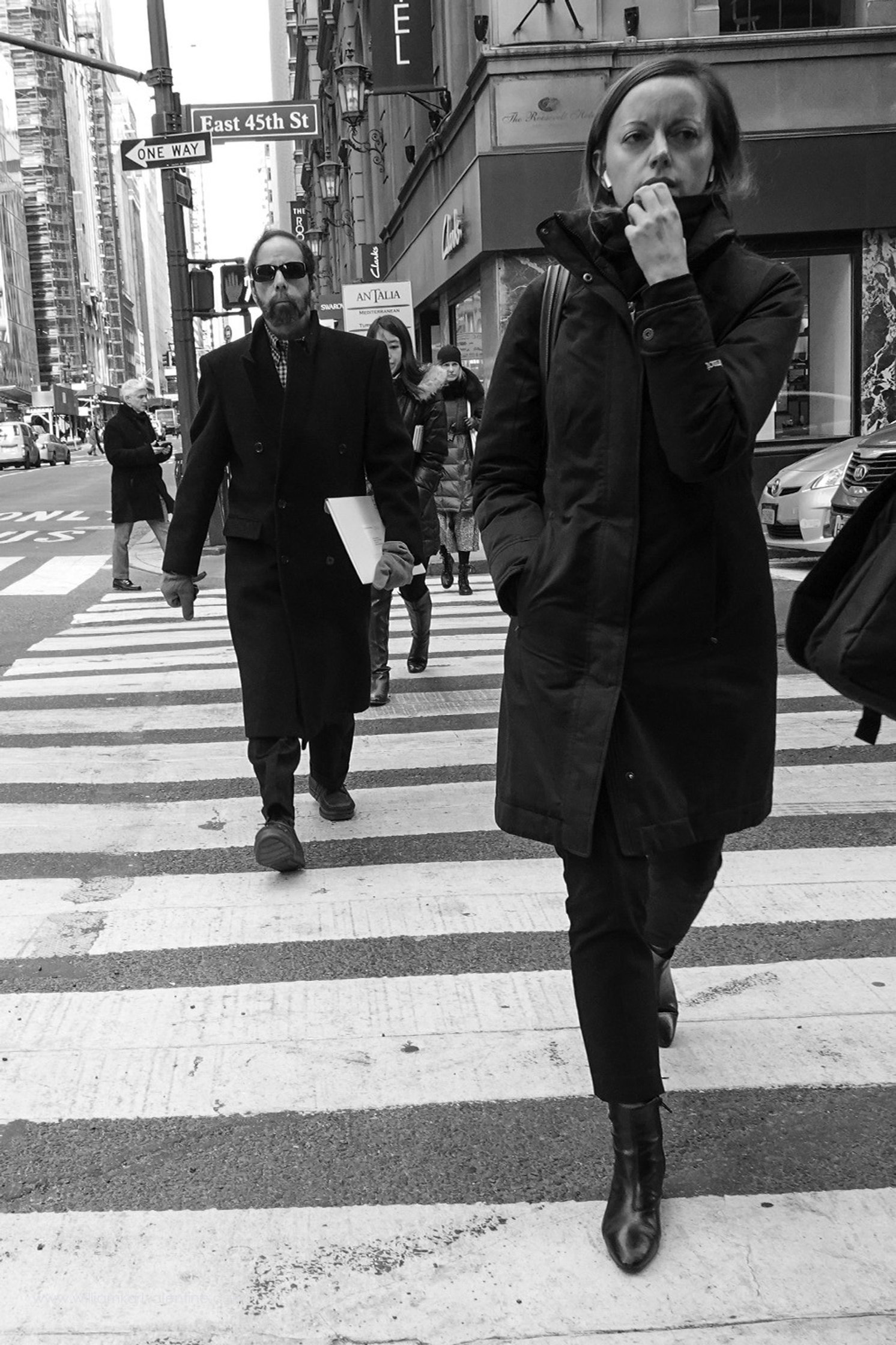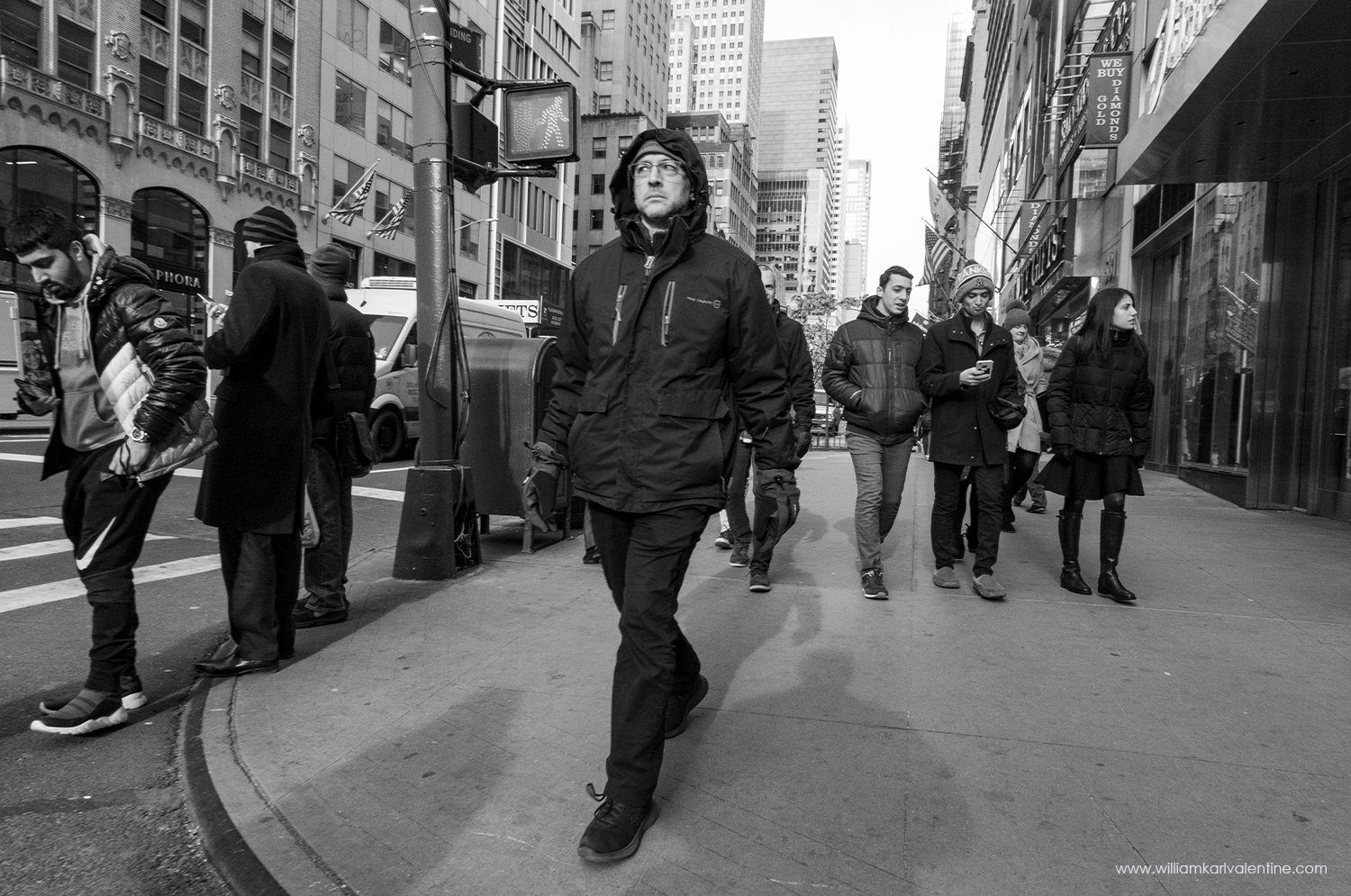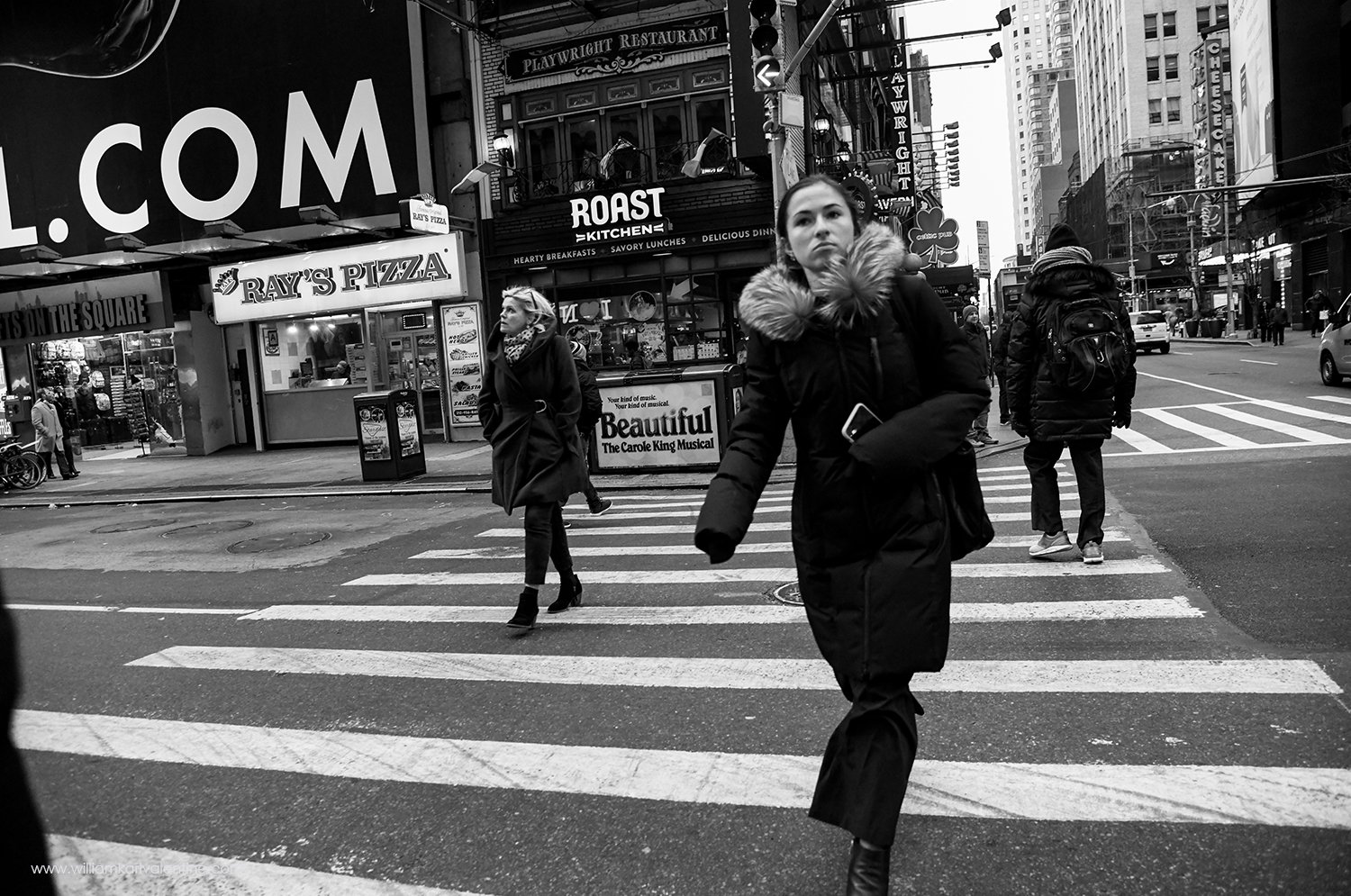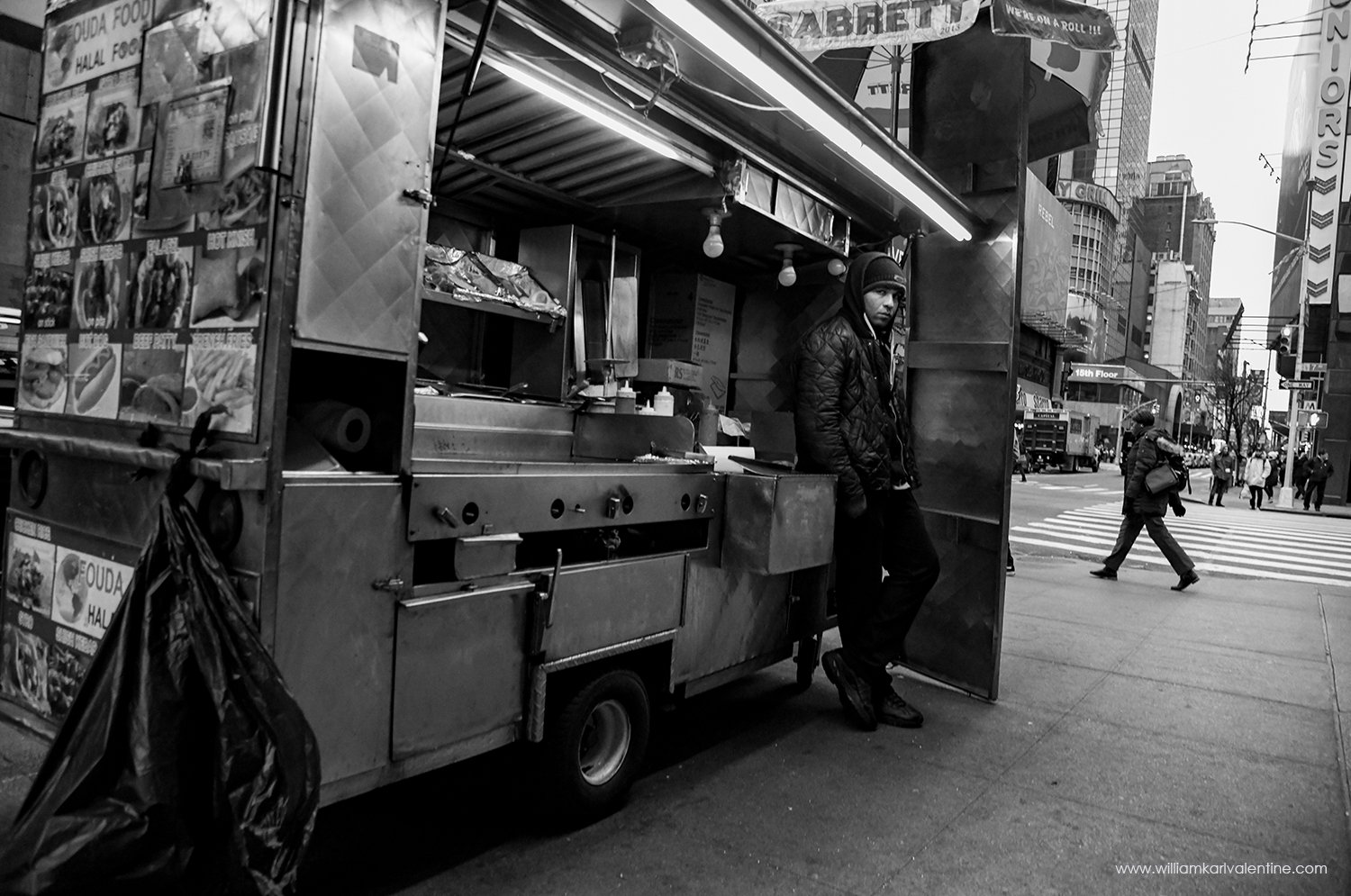I was able to get up to Danzinger yesterday afternoon and it was absolutely worth the drive. Danzinger is a great space, in Bergamot Station which has so many cool gallery spaces and is actually pretty easy to get to considering how hectic summer traffic can be in Santa Monica. The staff at Danzinger is also outstanding, they know the exhibition well and were actively engaging visitors to explain interesting facts about the work. The staff obviously has a passion for art and are motivated, I wish every gallery was like that.
Read MoreDoug Rickard 1968-2021
I heard a week ago or so that California artist Doug Rickard had died last November 30th at the age of the age of 53. My fear, and speculation, is he may have taken his own life, but I don’t know that for sure. He was relatively young, there has been no cause of death given, and in reading his bio information he made no secret that he had struggled with some things in life. I only mention this for anyone else out there who might be hurting and reads this post. I know of a couple people who have their lives in the last couple years, we are living in some ugly times right now but there should always hope, and I encourage anyone who might be struggling to tell someone, to ask for help.
Rickard became known in the art world for his series A New American Picture which he began in 2008. Using a Nikon D40 on a tripod, Rickard projected Google Street View images on to a large screen in his office then photographed them. Over a three-year period, he made 10,000 to 15,000 exposures which he eventually edited down to 80 for the final product. Aperture published the monograph of this work in 2012.
If I remember correctly, I first became aware of A New American Picture when I heard Rickard speak at the Medium Festival in 2014. To be completely honest I didn’t like the images aesthetically and I still don’t. In theory, his goal of documenting the areas of our country where opportunities to chase the American Dream are non-existent and impossible to achieve is a fantastic subject to be explored and documented. I just didn’t like his approach, sitting in a safe office using the images captured by some poor Google driver who had to drive through some of the roughest cities in the country to capture those images. Those drivers were the ones putting their asses on the line to get the images. I can only imagine how many rocks and bottles (or worse) have been hurled at those drivers in those areas. Another thing that bothered me was Rickard’s use of a low-end digital camera. Not that the 6.1 MP Nikon D40 was a bad camera for what it was, there were just better models out by then and he was printing 21” x 33”. I remember seeing a video of him working on the project and I was surprised he had two assistants helping him for something so simple. I am old school, the process of photographing is actually going to those places myself to witness firsthand, to experience the situation then capture the images to accurately document my subject.
But with all that said above, I am thankful for Doug Rickard’s work. I am happy the photography world accepted his unique approach and that so many people have seen his images. His body of work is very important. I want diversity in images and new approaches to the medium. I think Photography has had a habit of following trends, where a certain image style becomes popular, and that style dominates what is being shown. The Internet has obviously impacted that, but I still see the trends in the galleries. I wonder at times if my own work isn’t paying the price for past trends. We have all seen the 1920-1970’s images from masters of documentary photography so much over the years that I think some recent documentary work gets ignored or discounted because gallerists and curators are looking for new product to share. From a business perspective it makes perfect sense.
While researching for this post I learned more about Doug Rickard, and I developed a greater appreciation for him. I discovered Rickard was influenced by some of the photobooks that I love: American Photographs by Walker Evans, The Americans by Robert Frank, and Uncommon Places by Steven Shore. He had a strong knowledge of the history of the medium and he seemed to respect those who came before him. I also discovered the primary reason for using Google Street View was because he had a demanding job in the software industry and couldn’t take enough time to travel to all the places he wanted to document, he realized Google Street View allowed him to explore more places than he ever could have traveled to. In watching interviews of him online for this post I reevaluated my opinion and I understand better now that image quality didn’t matter to Rickard, in fact the poorer resolution was a desired look for his images. I also discovered Rickard’s influential website American Suburb X. Seeing the content on the site, it was immediately apparent that Rickard had an outstanding understanding of the documentary photography world, showcasing many of my favorite image makers. Looking at the site I think it may have been impacted by his passing and appears there wasn’t much activity on it over the last year which is unfortunate because much of the content on the site is outstanding.
I encourage you to follow some of the links in the post to get a better understanding of Doug Rickard’s work and its importance to the medium of Photography.
New York Photographs - January 2019
I just uploaded over 30 photographs from January 17th 2019 to my New York portfolio on my website. This blog post is to announce that and mention a few of the images which are standing out to me.
I was in Connecticut for a week and took the train in to New York City photograph that day. The light was good that day with no clouds. The windchill had the temperature down to about 18 degrees which did not feel that cold to me. My Nikon D500 though didn’t like the cold and shut down, luckily, I usually carry multiple cameras on trips like this do I was fine.
I am hopeful this blog post and update to my New York Portfolio with give view some insights to how I photograph. So often when I am in New York I will pick a few museums or galleries (Howard Greenburg in the Fuller Building is a favorite) I want to see that day and map out a straight-line route to start from. From there I walk and usually only stop to make camera adjustments or review images. Back in the day I would stop to change film and make notations on the canister but even with a Leica if needed I could walk and change film at the same time. Walking five miles in a day happens often, depends on the stops and what I come across. It is rare I stay in one location too long; the city moves and so I to as well. I also try and blend into the scene as I photograph so moving with the flow helps accomplish that. Moving also reduces becoming a victim since I am usually alone when I photograph. I am mindful of the sun when choosing my routes and which side of the street I am on. Back in the day T-Max 400 film at f/8 and 1/500th was probably my most common setting and I used a Sekonic hand meter. Today I am often on shutter priority at 1/800th. I appreciate the ability digital images give me to proof instantly, especially in tough lighting conditions.
I am drawn to these images above because there is a perceived sense of tension between the people in the images. Our world today is full of tension, and the weight of those tensions have been relentless on us for years. Relationships between people, and individuals to society are not as good as they should be today.
This grouping of Warhol paintings at the Whitney is probably the most epic grouping of art pieces I have ever seen in a museum. The grouping sums up so much about our world and life for me. Senior Curator Donna De Salvo, Senior Curatorial Assistant Christie Mitchell, and Curatorial Research Associate Mark Loiacono organized the exhibition, so I assume one or all of them deserve credit for it. When I saw the person with the support dog and the other man facing the cross in front of Warhol’s work, I had my image. I know I have written about it before but I will say it again, the Warhol retrospective was amazing, incredible how much work they gathered for it and the presentation in the space was perfect.
I know some people might think it is odd for me to photograph in galleries and museums where other art is on the walls. I often find myself with the desire to photograph as a means to experience something. I like to document moments and retain memories; the camera allows me to do that. Over time I have often found the juxtaposition viewers have with the artwork on the walls cab create new images of value. Plus, I am always aware of potential images, it is just how I see the world.
When I first went to photograph in New York in 1988 one of the things I was drawn to were the banks of payphones throughout the city and how many people congregated there. Over the years we have seen pay phones fade away as cell phones have made them obsolete. That transition changed the images I was finding in the city. Before many people I photographed walked with their heads up, looking straight ahead to avoid interaction. Now people seem to use their cell phones for this. Their phones give them a false sense of protection and a means to distance themselves from others. I now look for images specifically with people and their cellphones when I photograph, I think those images can make strong statements about the world we live in today.
I like the graphic element of this image above and the style of these two women who I assume are mother and daughter. This image can be unpacked so many ways depending on the viewer. Some may see it as a statement about wealth and privilege in the world today. I see it as a documentation of the mother daughter relationship and how it evolves while also staying the same in many ways. I envision the daughter loving ice cream and getting excited every time her mom took her for some when she was young. They probably have a special bond with all the times they have gotten ice cream over the years. I imagine this is an especially strong bond considering the day I photographed them it was well below freezing outside and that they are sharing the same scoop. In comparing the fashion and style of both I can also imagine that the mom has groomed her daughter to be a mirror image of her. Obviously, I am presenting a fair amount of speculation and interpretation of the image but don’t we all do some amount with every image we see. The girl being on her phone adds to the image as does the fact she apparently has seen me photographing them and my blurred reflection is visible on the granite wall. Those last two facts bring some self-portrait elements into the image. The Rolex store background is another important component of the image too obviously.
New York is Mecca for Street Photographers. I know Winogrand hated the term “Street Photography”, adamantly pointing out he was photographing people not the streets. I also know many images I see today which are described to be “Street Photography” are not. I think there are quite a few photographers out there that are enamored by the title of being a Street Photographer so they call any of their contrasty and saturated images street photography because it makes them hip. I have recently seen drone photographs and ocean photographs listed as Street Photography…No
I identify as a documentary photographer, it is the most accurate description of my work because I have so many varied portfolios, documentation is the prominent element in all my work. Stylistically when I photograph in cities, my work is Street Photography. I am moving amongst people looking to capture split second moments of interaction which can have deeper meaning when examined as an image. Street Photography is a process. My movement through the people walking in the opposite direction while I try to blend into the crowd. There is interaction in being there but usually I do not want that to influence my images.
When I am in New York photographing I look for my own images, I am not trying to mimic the work of icons. But I do feel a unique energy from the city and knowing the legendary photographers who have also walked those streets with a camera. Some of my favorite photographers are: Garry Winogrand, Bruce Davidson, Tod Papageorge, Helen Levitt, Joel Meyerowitz, Jill Freedman, Lee Friedlander, Danny Lyon, and Wee Gee. I also like Bruce Gilden’s work but I could never photograph in his style too much confrontation for me but that is what sets his images apart.
Screen Shot of KQED article
Photographer Ted Pushinsky
While working on another post today I came across the work of documentary photographer Ted Pushinsky which I was not familiar with before. It caused me to take a detour and explore some of his images. I enjoyed his photographs and related well to most of his subject matter. The fact he photographed with Garry Winogrand on the street and photographed Andre the Giant in the ring definitely makes me a fan.
This is a quick post to give some links to his work so others can also discover his work.
It started with this Mother Jones article on Garry Winogrand with a Pushinsky photograph of Winogrand on the street photographing.
From there I went to his website which is a little rough in design but showed the range of his work.
I also found this KQED article which is memorialized his passing in 2018.
Recent Discoveries on the Web - Unauthorized Image Use
I make it a habit to Google search my name from time to time to see what is out there, especially everytime I see a traffic spike to my web site. Here are a couple interesting recent finds which occureed in 2020.
The first images were used in a paper titled “White/Black: A tale of two epidemics Historical Trauma and Addiction in the Black Community” by JOSEPH PHIPPS, BA & IAN MCLOONE, LPCC, LADC (ST. PAUL, MN SEPTEMBER 11, 2020) who are students at The University of Minnesota.
The paper is professional although I do not agree with every opinion the authors have. I will say they have good taste in images and I loved the pairing of my images with photographs by Mary Ellen Mark and Eugene Richards. Also props to them for a photo credit linking back to my website. Normally I would expect someone using my photographs to reach out to me before doing so, especially since I have a tab for “Licensing” on my header, but given the nature of their project I think I understand why they didn’t take the time to do that.
The second image used was this one above in a blog post titled Valentine Bloods. After reading the blog I have no idea how the image really ties in to the post other that a Valentine was the photographer and the subjects were a couple of Denver Lane Bloods. To be completely truthful I couldn’t figure out anything in that blog post. Jihan Pink was good enough to again give me an image credit and for that I am thankful. Absolutely no idea how Jennifer Esposito figured in to that blog post either, but at least I could see some tie in with Melissa del la Cruz’s “Bloody Valentine” book covers. Sadly this blog post will be the only time I will ever be linked to Jennifer Esposito.
I get licensing requests somewhat often, lately mostly for use in documentary film projects. If there is ever any a question as to whether you can use an image, please refer to the licensing page on my site and reach out to me. I retain the copyright on all my photographs, and I always consider the integrity of the image compared to how it will be used when reviewing a licensing request.


















